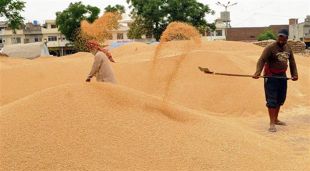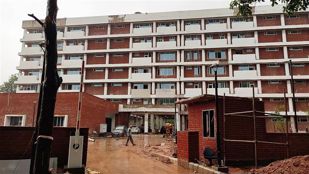Sushil Manav
Tribune News Service
Chandigarh, October 14
Residents of Delhi and the NCR should be prepared for smoky days. Despite claims of “in-situ management of stubble” by Haryana, stubble burning is unlikely to stop completely this year, though it may decline to some extent.
The Tribune has learnt that availability of Happy Seeder and other machines for stubble management with farmers and custom hiring centres (CHCs) established in the state are too inadequate to manage nearly 70 lakh MT of stubble which is likely to be produced in the state this season.
With acreage of paddy13 lakh hectares (32.5 lakh acres) in the state and average landholding in the state being three acres, there are nearly 10 lakh potential stubble-burning farmers in the state.
The Haryana Government on Friday claimed that 857 CHCs had been set up in the state and 2,857 farmers had been subsidised for purchasing their personal machinery for stubble management.
Sources said with each CHC having three to four machines, Haryana has barely 3,200 Happy Seeder machines for hire in almost equal number of paddy growing villages.
“One machine manages maximum of 120 to 150 acres in a season, since it covers five to six acres in a day and the season lasts 20 to 25 days,” said Vikram Aditya Ahuja, Director of Zamindara Farm Solutions and a trustee of the JBNR Trust.
The Trust has been entrusted with the job of creating awareness on benefits of not burning stubble among farmers by NABARD this year.
In such a scenario, the 857 CHCs will be able to manage stubble on 4 to 4.5 lakh acres to the maximum, while 2,857 individual machines owned by big farmers may add another 2 to 2.5 lakh acres to it.
“Even if 25 per cent of the farmers keep their stubble for animal fodder, more than half of the total paddy farmers will have no choice but to burn it in the end,” said sources.
Ahuja admitted that when his teams go to districts with the authorities and ask villagers to take oath that they would not burn stubble, nearly 30 to 40 per cent refuse to it.
Under the “in-situ management of paddy stubble”, the state government is offering 50 per cent subsidy to farmers for purchase of machines like Happy Seeder, but farmers still find this a bad bargain.
“A Happy Seeder of Rs 1.50 lakh costs Rs 75,000 after subsidy. But it will be used only for six hours in the whole year. How can a farmer invest so much on a machine which is to be used for six hours a year?” asked Gurjeet Singh Mann, a farmer from Kirpal Patti village in Sirsa district.
Farmers also allege that the machine’s cost has been hiked by Rs 50,000 after announcement of subsidy denying farmers its benefits.
A senior officer of the Agriculture Department said that straw-burning cases in the state had reduced considerably during the current paddy harvesting season.
“Till October 10, paddy had been harvested on 4.01 lakh hectares and there had been arrival of 20 lakh tonnes of paddy in the state. As per satellite data furnished by HARSAC, only 459 incidents of burning involving an area of 735 hectares have been noticed. This was less than 1 per cent of the total area where harvesting had taken place,” he added.
Ill-equipped to tackle load
- The Haryana Government claimed that 857 CHCs had been set up in the state and 2,857 farmers had been subsidised for purchasing their personal machinery for stubble management
- With each CHC having three to four machines, Haryana has barely 3,200 Happy Seeder machines for hire in almost equal number of paddy growing villages
- In such a scenario, the 857 CHCs will be able to manage stubble on 4 to 4.5 lakh acres to the maximum, while 2,857 individual machines owned by big farmers may add another 2 to 2.5 lakh acres to it



























